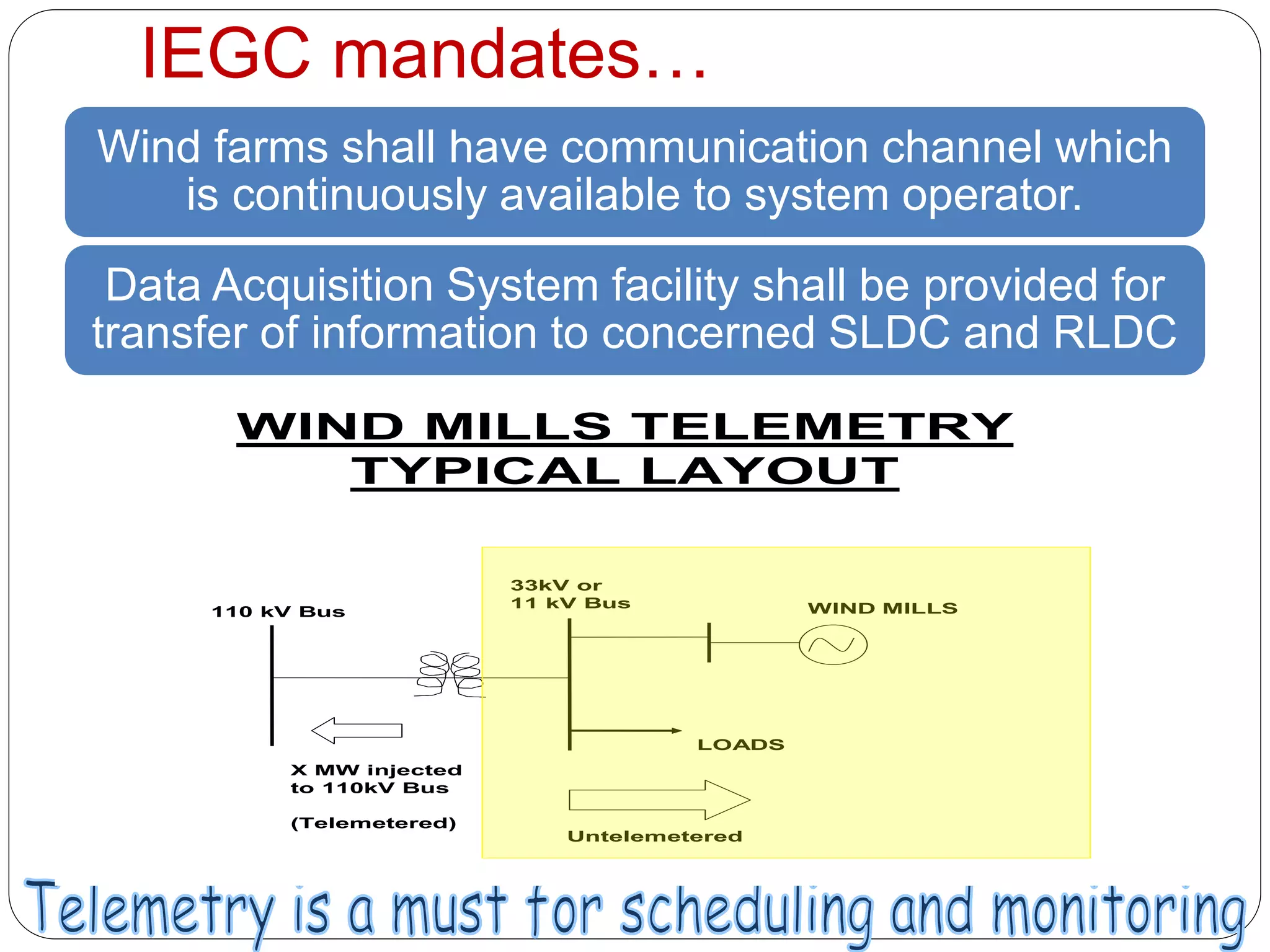The document provides an overview of renewable energy sources and development in India. It discusses factors driving the growth of alternative energy sources like limited fossil fuels and environmental concerns. Key policies like the Electricity Act of 2003, National Electricity Policy of 2005, and National Action Plan on Climate Change of 2008 established targets and mechanisms to promote renewable energy. India has significant potential for various renewable sources like solar, wind, biomass, small hydro and tidal due to geographical and climatic conditions. Various regions in India are suited for different renewable technologies based on available resources and potential. The document outlines the growth of installed capacity for different renewables over time and discusses site selection criteria for technologies like wind power.
































































